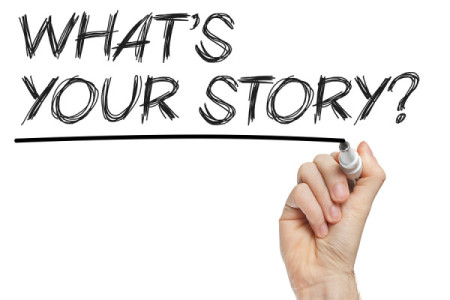Are you writing stories with feeling on your business blog? If your blog post doesn’t resonate emotionally, you can’t do a good job of building relationships, inspiring trust, and moving people into taking action.
As I mentioned in my last post, great blog content appeals to people who are both thinkers and feelers. To do this, blog writers need to get real with readers – they need to step away from their anonymous masks and get emotional. If you don’t, readers won’t respond to you.
So, how do you remain professional, and still write with emotion?
Emotions are either positive or negative. There are relatively few pure emotions:
- Anger
- Sadness
- Fear
- Enjoyment
These elemental feelings are universal. Specific facial expressions for fear, anger, sadness and enjoyment are recognized by people across diverse cultures.
Emotions can be complicated because they get combined, like primary colors. Jealousy may be a mix of anger and sadness. Guilt may be a combination of enjoyment and fear. Fascination may be an excited version of curious.
Authors Dan and Chip Heath, in Switch: How to Change Things When Change is Hard, mention research about emotional words. Of 24 common words for feelings, only 6 of them are positive. A psychologist identified 558 emotion words, and determined 68% of them were negative, versus 38% positive.
Clearly bad is stronger than good. I wonder how many of you think about negative things to write about. Of course, there’s a way to write about negative feelings, and still have a positive outlook with positive solutions.
Emotional Writing
My background in psychology has been essential in learning how to write effective content for a business blog. Without psychology, I wouldn’t have the awareness of subtle emotional context that’s behind client interactions. I’m acutely aware of possible reactions from readers.
The most difficult thing in learning to write effective content for any business is making the leap from purely intellectual writing to emotional writing. Until you start telling stories with real people in them, your writing probably won’t connect with readers emotionally.
For many content creators, writers, or bloggers, that is risky. We’re not trained to write emotionally. In fact, what does that mean, to write emotionally? Feelings are subtle and are enmeshed in everything we do, say, or write, but without awareness, we miss recognizing them.
Here’s a tip: If you’re not already, start a journal. I recommend doing it electronically, and if you can, categorize your writings by feelings: anger, sadness, fear and enjoyment. Then, when you want to tell a story, you can easily tap in to that feeling. To start, record stories from your day. It can be a short 150 word paragraph, where you note an activity and how you felt about it. Later, when you want to include a story in your blog post, you can craft it in to the perfect story with a character, challenge, vision, conflict and triumph.
Rationality is only one small part of what compels people to read your content. The more compelling reason people read what you write is because you hook them with feelings.
2 Lessons to Learn
- Emotions are extremely powerful influences over the actions of your readers and clients. They are in fact what makes people comment, sign up, register, download, or buy.
- Emotions are doubly powerful when they are unconscious. Unconscious feelings have been shown to have a higher biasing effect on decisions than conscious feelings. A reader, or decision maker, is less able to be reflective about the reasons for their choices.
Even if people are aware of their feelings, they are unlikely to be fully aware of the unconscious influence their feelings are having on their decision making. In studies, participants deny that emotional context influences their decisions because they aren’t consciously aware of them.
What can you do to raise the level of feeling in your writing? The simplest way I know is to tell a true story. There are more feelings in what people do and say than you can imagine. You don’t even have to identify them or name them. Emotions are everywhere once you start to look for them.
Let’s not complicate this. It’s as simple as writing your true stories. As a professional what event made you decide to do what you do? What’s that backstory? There you go. Telling the “why” behind the “what” is always an emotional story.
Try it and let me know if this makes a good blog post for you. You can reach me here or on LinkedIn.















Recent Comments